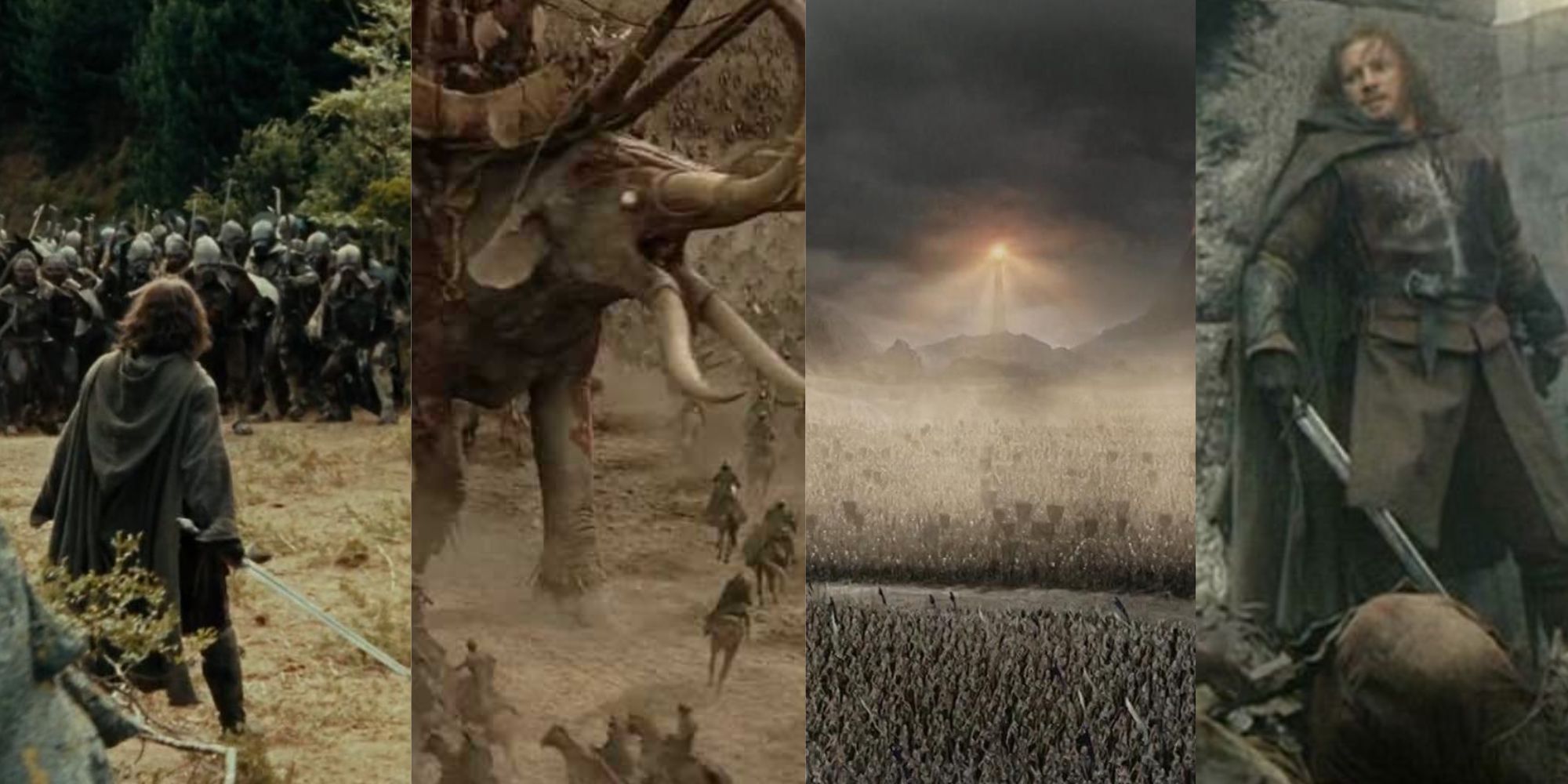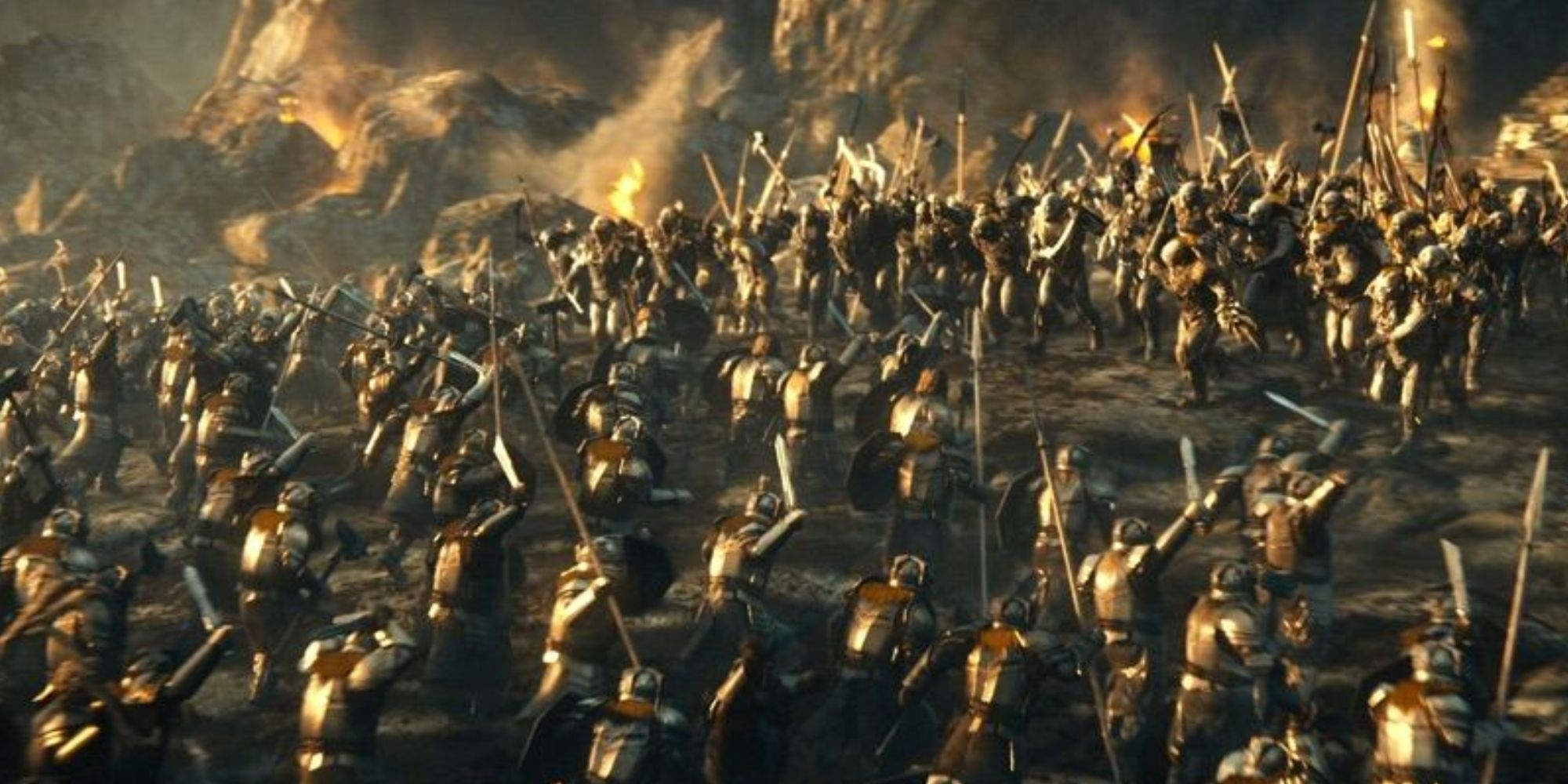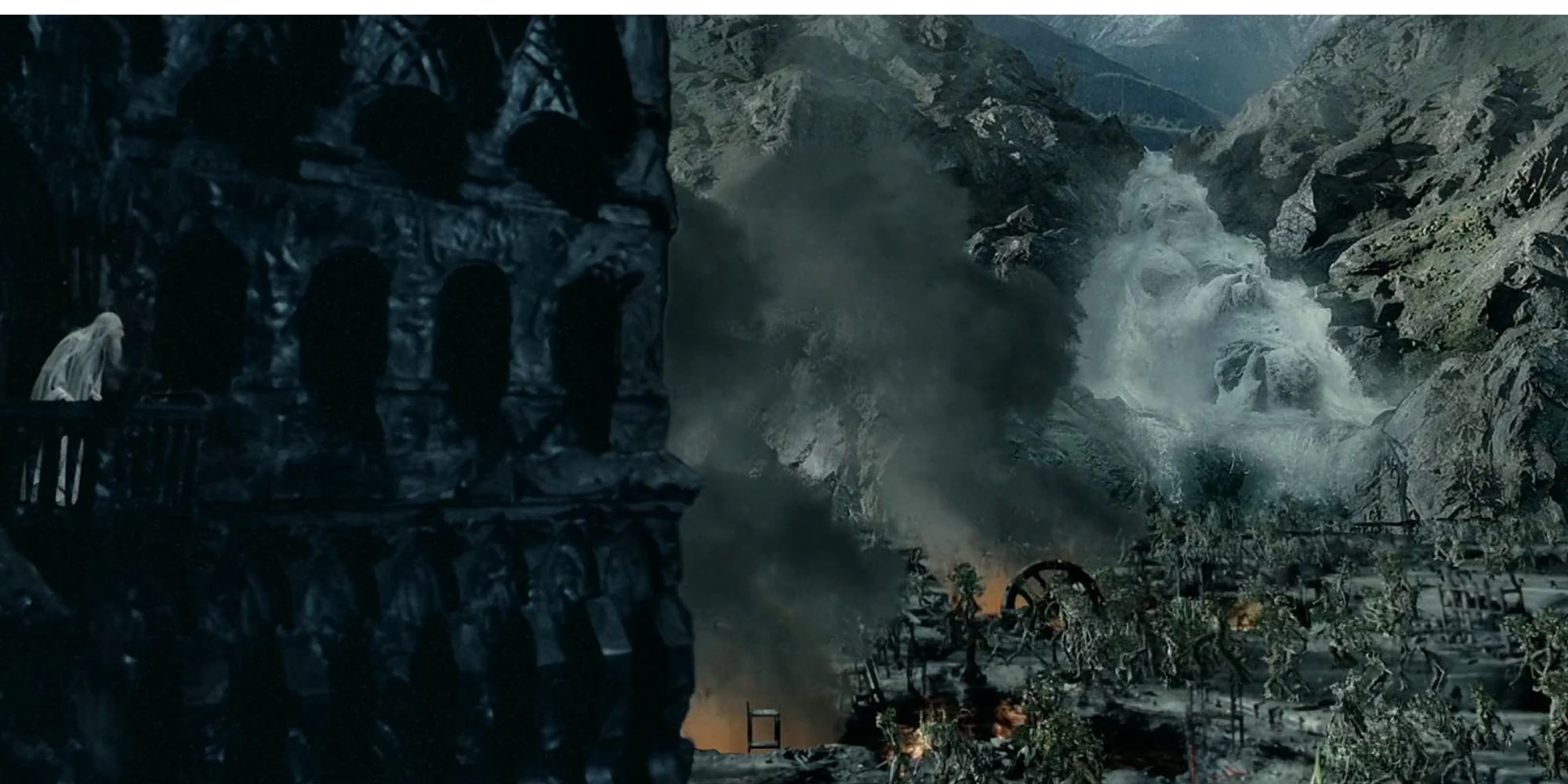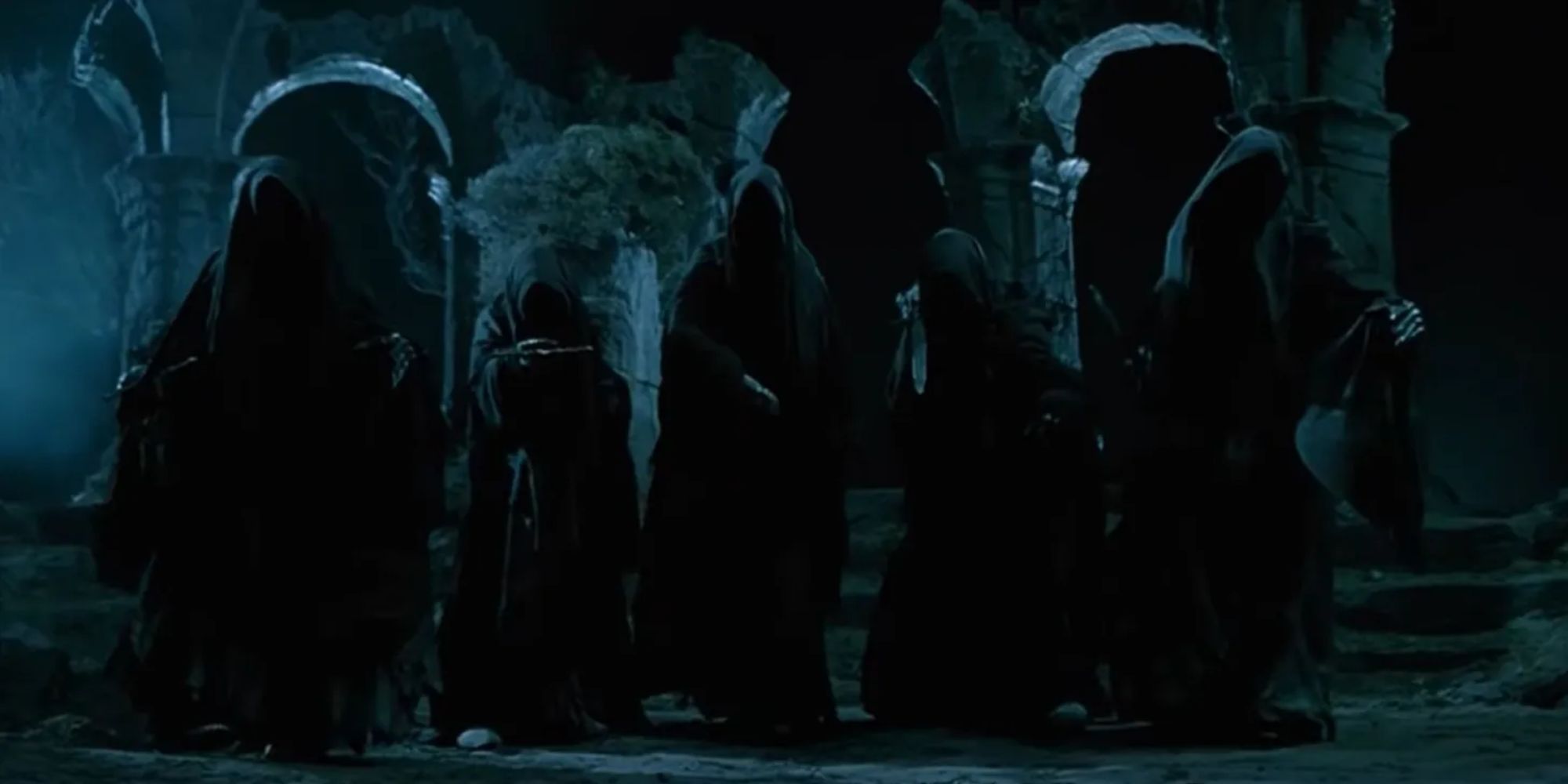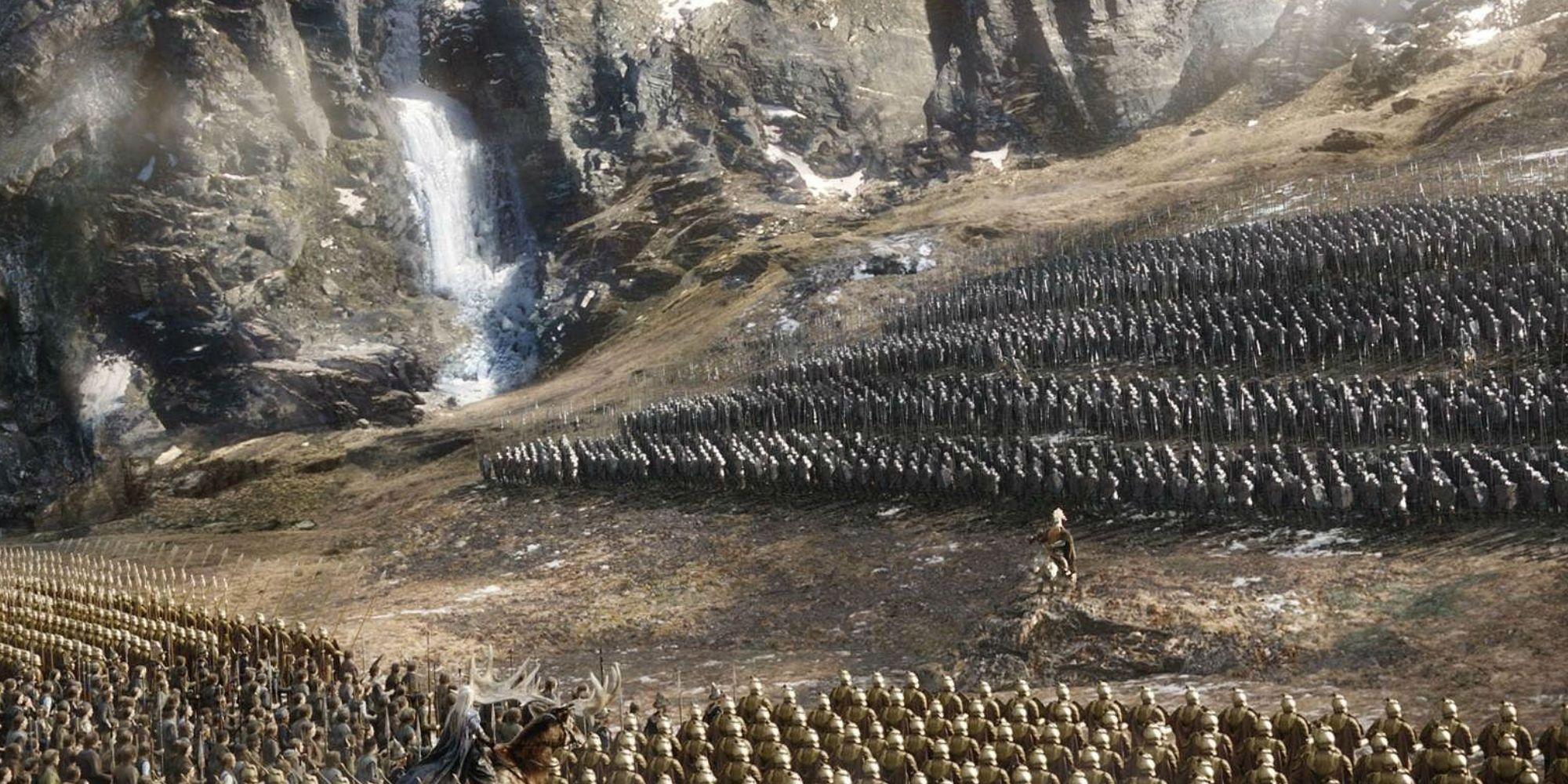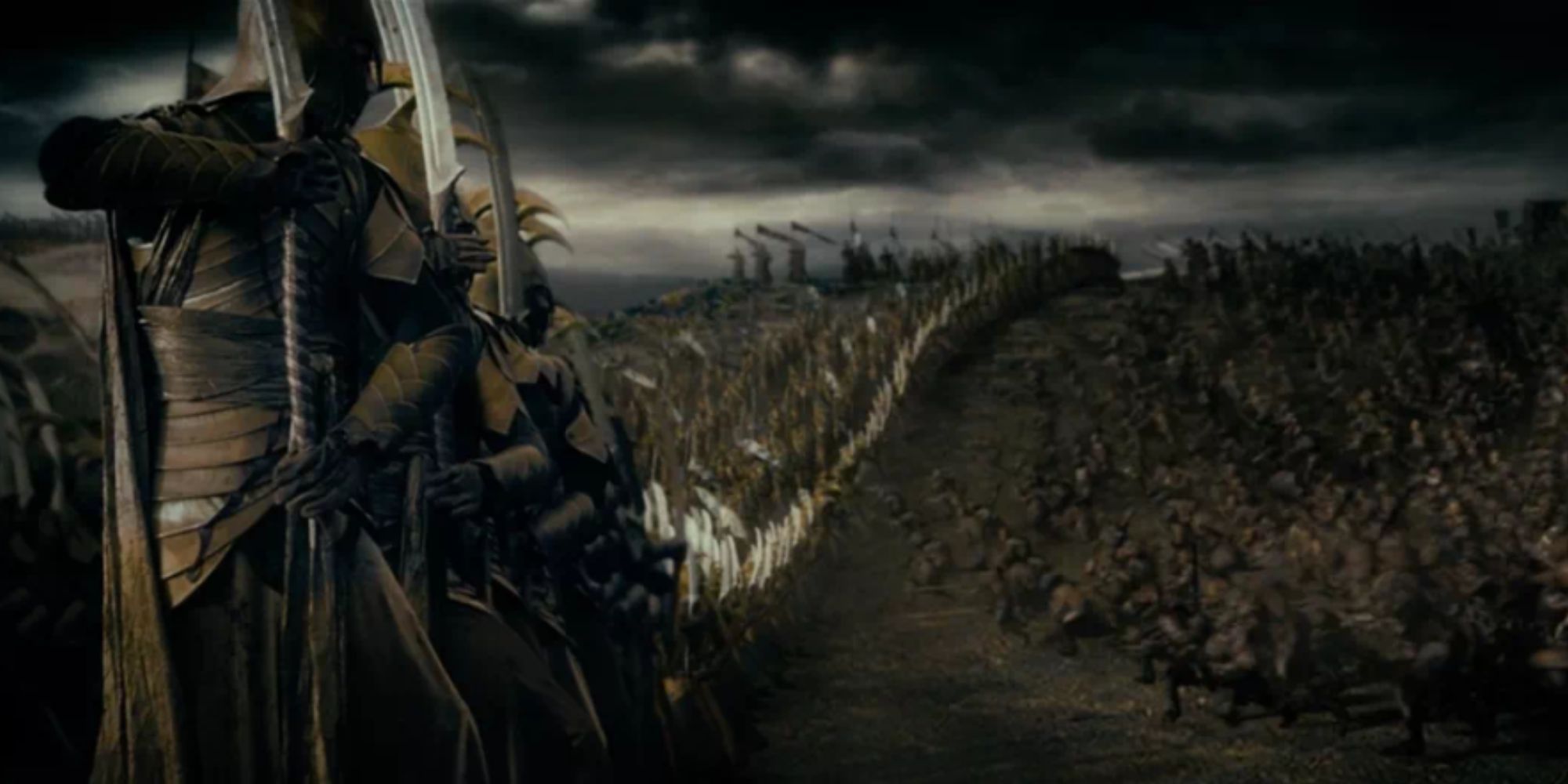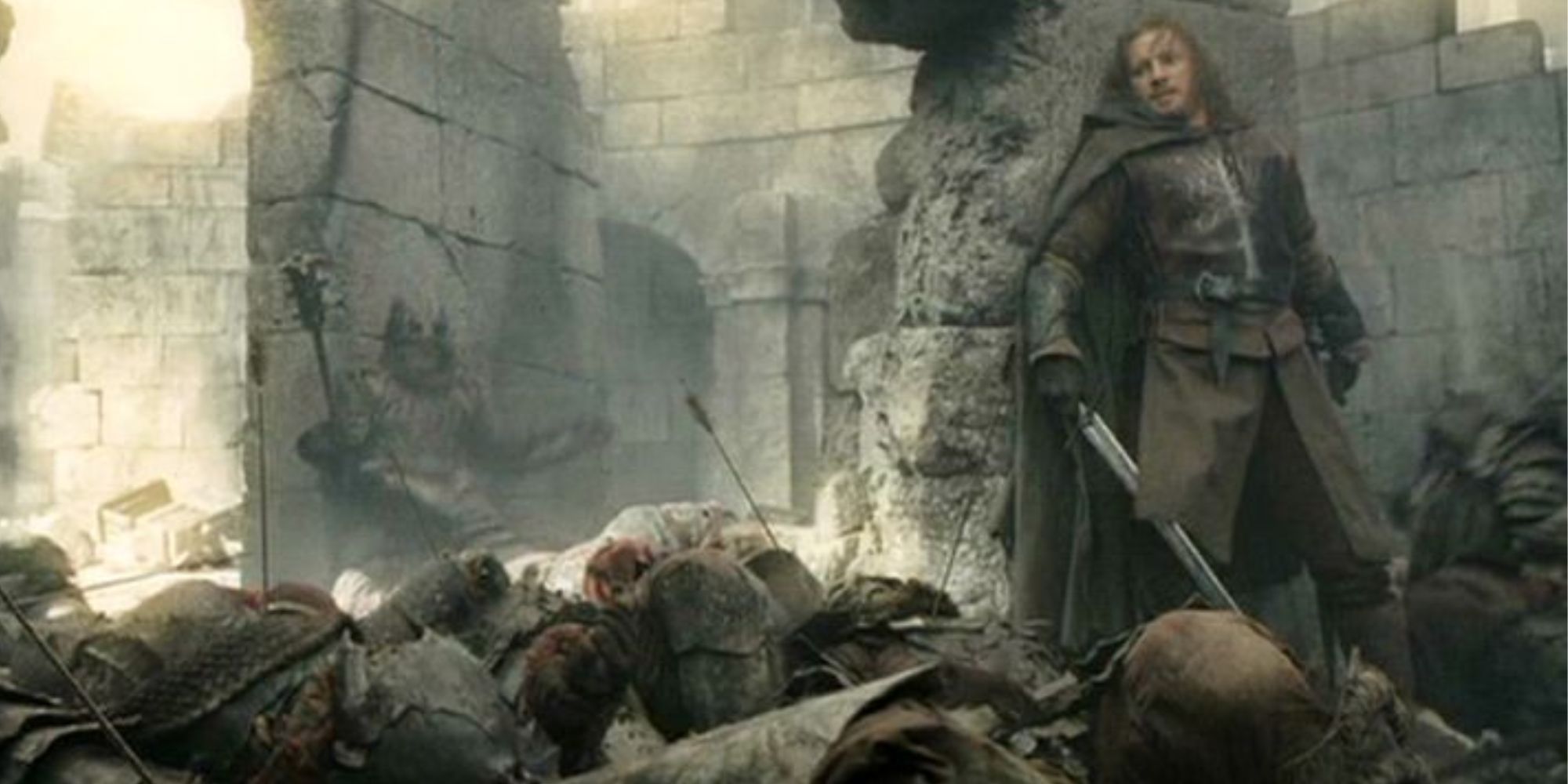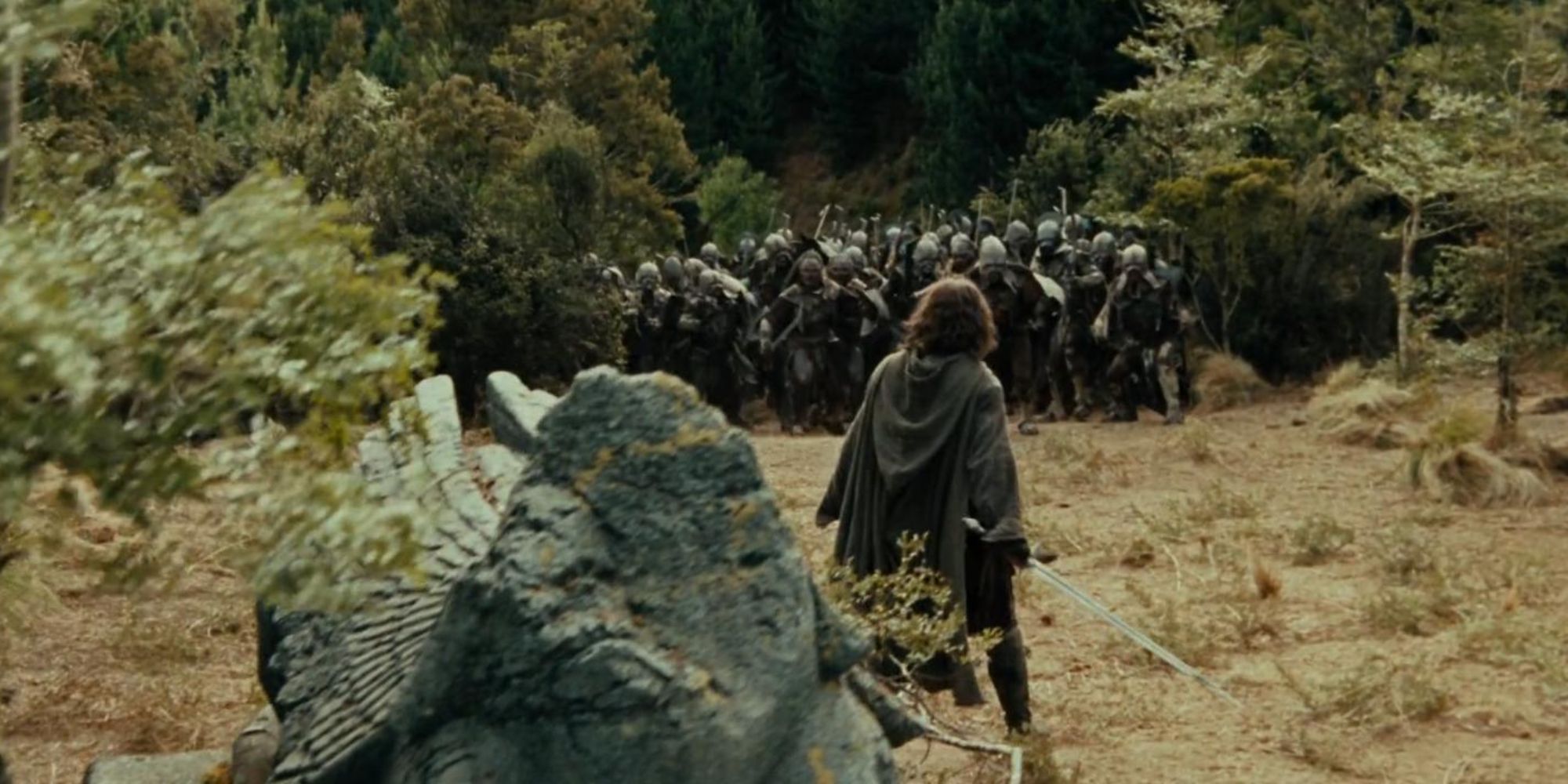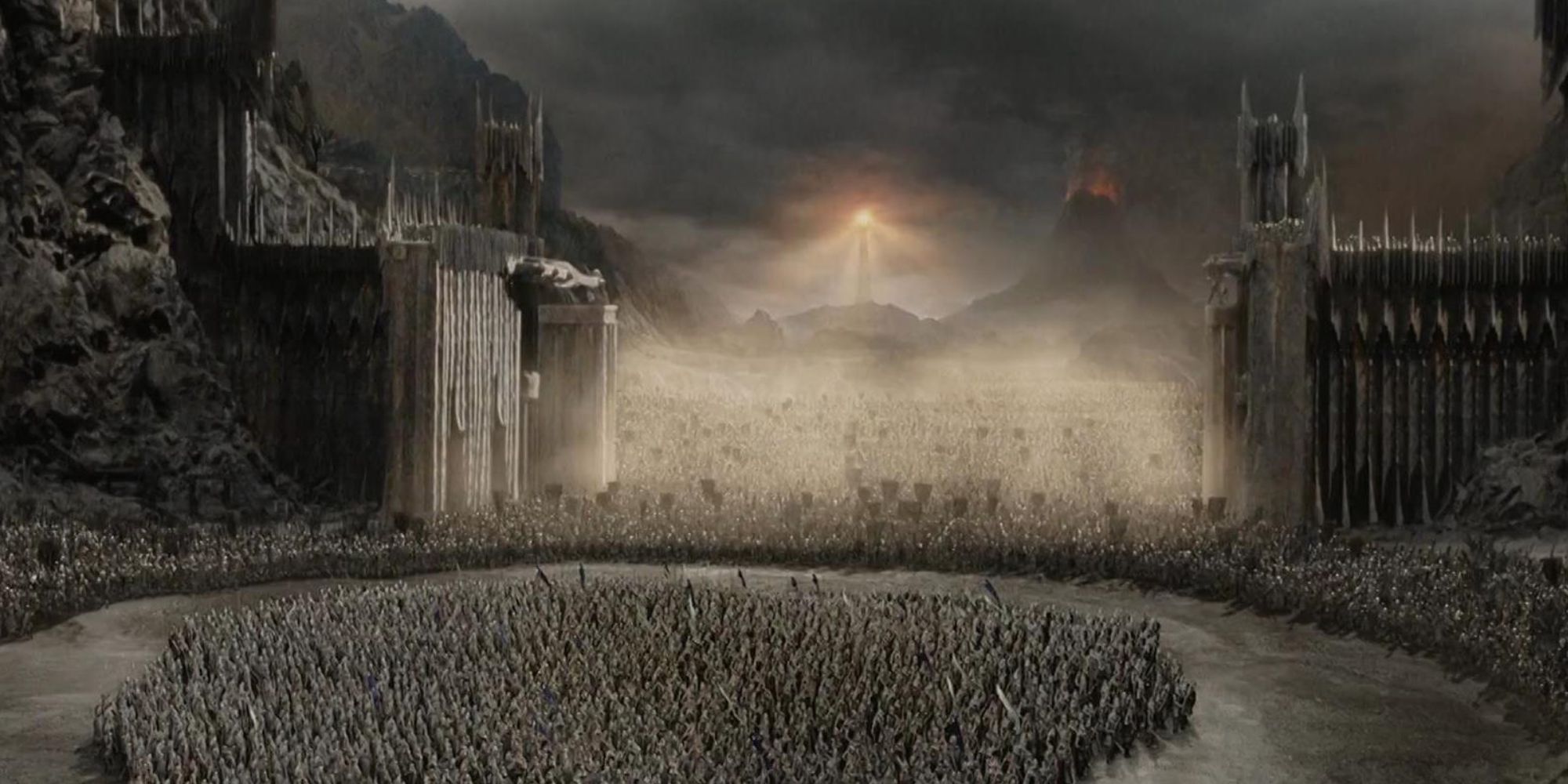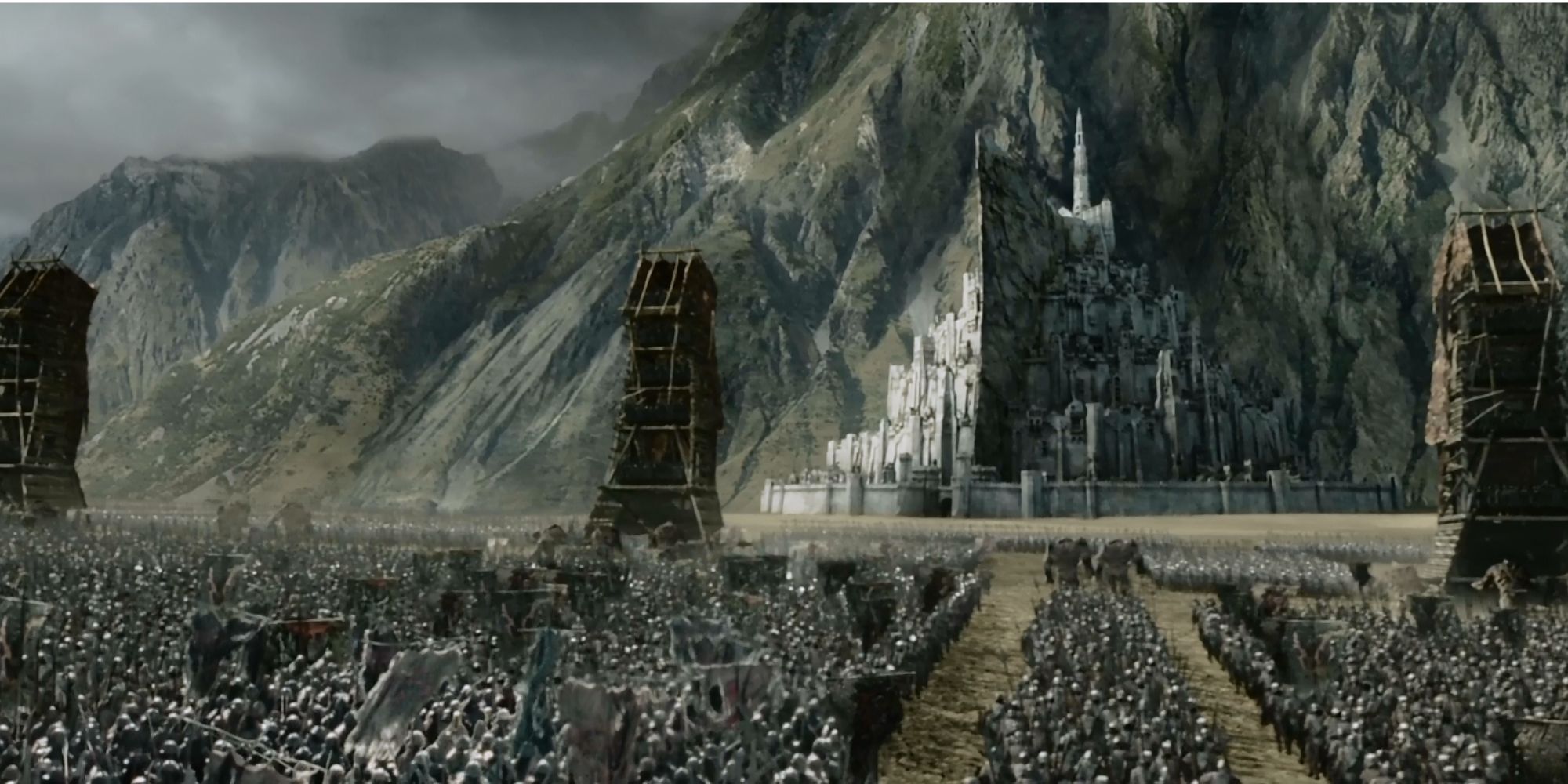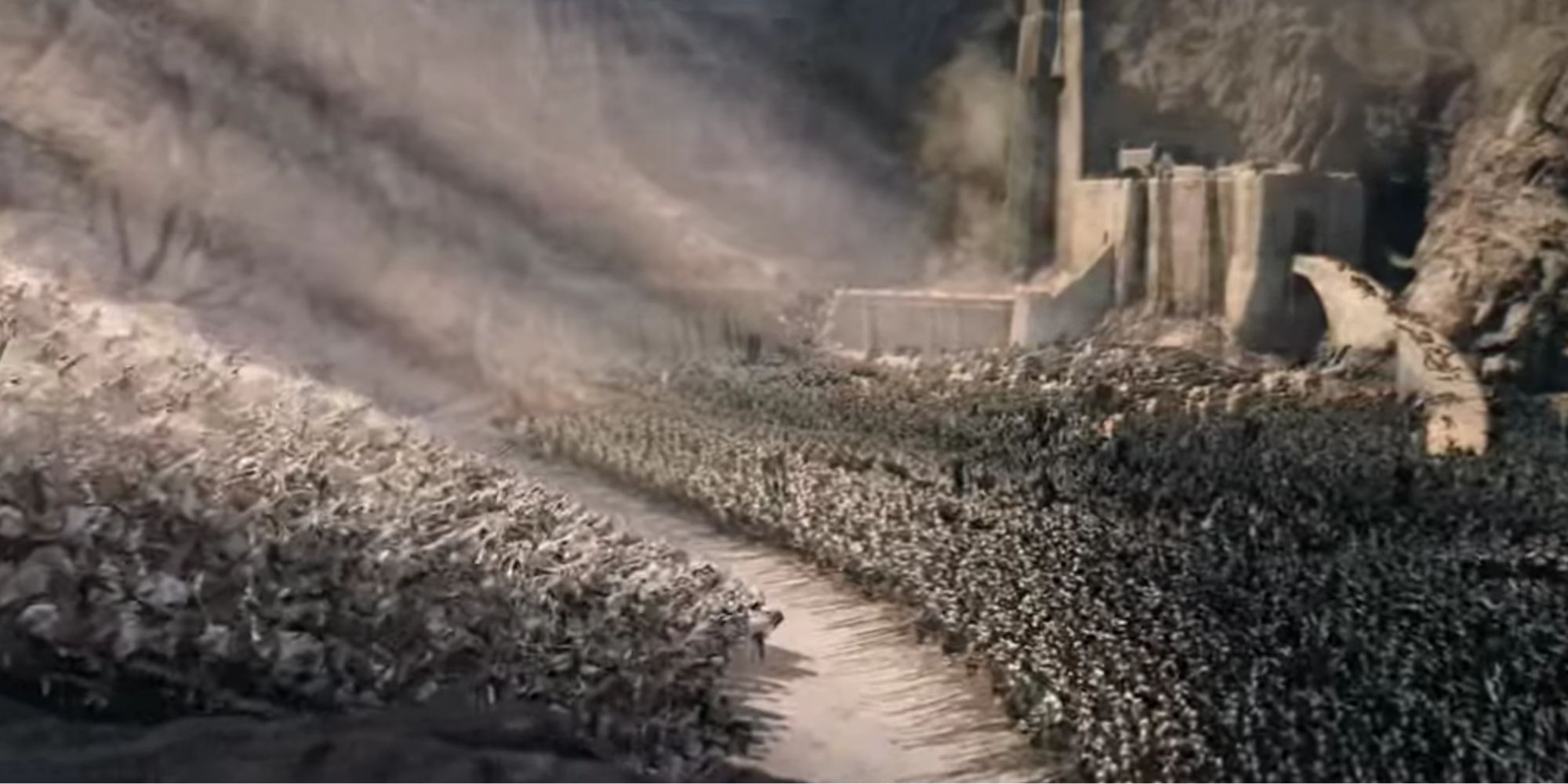With much of the Middle-Earth saga revolving around a war between light and dark, it is to be expected that there will be sieges, battles, assaults, and everything in between. These can range from minor scuffles to all-out onslaughts, with varying levels of quality.
While most of these battles are, of course, great eye candy, they also serve as major plot points to understand the lore of Middle-Earth.
The Battle of Azanulbizar
The Battle of Azanulbizar is only briefly seen in The Hobbit: An Unexpected Journey (2012) during a flashback sequence. In the flashback, the dwarf Balin (Ken Stott) recounts to Bilbo Baggins (Martin Freeman) how the dwarves attempted to retake the dwarven kingdom of Moria from the orcs, but were met with strong opposition. Though the dwarves won the battle, it was a pyrrhic victory if anything, as they suffered heavy losses.
Still, the brief flashes of combat combined with the constant slow-motion and narration overtop hardly make this exciting. Though, it does slightly connect to the original The Lord of the Rings trilogy, and helps to introduce the deuteragonist of The Hobbit trilogy.
The Battle of Isengard
The Battle of Isengard occurs towards the end of The Two Towers (2002), and is fought between the ents of Fangorn Forest and the forces of Saruman. While it does earn points for being unique among the others, it pales in comparison with The Battle of Helm's Deep, as clips of The Battle of Isengard are interspersed throughout the action at the Rohirrim fortress.
The fight ultimately results in the destruction the stronghold of Isengard, and the death of Saruman (Sir Christopher Lee). Though it is a major victory for the forces of good, it is ultimately overshadowed by the greater victory at Helm's Deep.
The Skirmish at Weathertop
The Skirmish at Weathertop is the first real extended combat sequence in The Fellowship of the Ring (2001). It is the first scene where the true power of the Ringwriaths is introduced, and also exhibits the combat prowess of Aragorn (Viggo Mortensen).
Fighting off five phantoms by himself with nothing but a sword and a flaming torch, Aragorn successfully wards the wraiths off, but not without a cost. During the fight, Frodo (Elijah Wood) is injured by the poisonous blades the wraiths use, and must be hastily evacuated. While the sequence is exciting, it is rather small, with a fairly static environment and only a few major adversaries to fight off, which makes it less invigorating than other scenes.
The Battle of the Five Armies
The Battle of the Five Armies is the main plot point of the third The Hobbit film, appropriately named The Battle of the Five Armies (2014). It begins after the slaying of Smaug the Terrible (Benedict Cumberbatch). Several armies show up on the doorstep of The Lonely Mountain that Smaug once called home, all hoping to gain a piece of the long-lost dwarven treasure he was hoarding. Two armies of orcs and wargs clash with a legion of dwarves, a battalion of elves, and an army of humans, meeting at the plain at the foot of the mountain.
The sequence was criticized for being cartoonish and slightly ridiculous, but the visuals are still stunning. It also portrayed the sequence better than in the book, as in Tolkien's The Hobbit, Bilbo is simply knocked unconscious and reawakens after the battle is finished, making the ordeal in the book seem rather boring in comparison.
The Siege of Barad-dur
This battle can only be seen in the introductory sequence of The Fellowship of the Ring. Though it occurs thousands of years before the main events of the film, it is necessary to view it, as it highlights the journey of the One Ring, and the defeat of the dark... or so it is initially thought.
The sequence is fast and not very elaborate, but the cinematography along with the choreography of the swordplay really gets the audience hooked right from the get-go.
The Battle of Osgiliath
The orcs' assault on the Gondorian capital of Osgiliath actually takes place over the course of two films. It begins in The Two Towers, where Frodo, Sam (Sean Astin), and Gollum (Andy Serkis) are taken after being captured by the forces of Gondor. The city is besieged by the forces of the shadow, which gives the hobbits a chance to escape.
The end of the battle is shown in The Return of the King (2003), where a final assault is made on the city. Though the battle isn't shown as much as some of the others, it is the only battle in the series where the good guys actually lose. The forces of Gondor are forced to flee the city, and make an attempt to retake it, but to no avail.
The Skirmish at Amon Hen
The Skirmish at Amon Hen is the final sequence of The Fellowship of the Ring. While it maybe isn't the most visually spectacular fight in the MIddle-Earth saga, it is an extremely important plot point. The Fellowship splits during the confusion, and ends up going in different directions altogether.
This, combined with Boromir's (Sean Bean) heroic sacrifice to protect the hobbits make this bit of combat worthwhile. It's a tragic scene, despite the fact that the forces of light do succeed in holding off the orc attack.
The Battle of the Morannon
The Battle of the Morannon, also known as The Battle of the Black Gate, is the thrilling climax to The Return of the King. It is the last, desperate effort the allies make in order to distract the Eye of Sauron and give Frodo and Sam enough time to destroy the One Ring. It is a gamble, and many lives are lost, but the fact that it is the only chance the allies have to win, and they take it despite the consequences make for a bold tale of heroism.
Though it's not as wondrous to watch as Pelennor Fields or Helm's Deep, it is by far the most story-driven fight in the series, and a perfect example of the courage and sacrifice made by Aragorn and his supporters.
The Battle of Pelennor Fields
The Battle of Pelennor Fields is actually part of another military operation: The Siege of Minas Tirith. It is technically two closely-related fights, but as Gimli (John Rhys-Davies) says in this very scene, "that still only counts as one!" When the white city is besieged by the forces of Sauron in The Return of the King, it initially appears that Gondor is going to lose. However, reinforcements arrive in the form of the riders of Rohan. Unfortunately, Sauron also has reinforcements, in the form of the Easterlings of Rhun, and the men of Far Harad. What ensues is absolute carnage, with hundreds of people killed. The fight is ultimately won when Aragorn appears with an army of the dead at his back, which easily sweeps through the forces of Sauron.
It is the longest battle in the entire trilogy, going on for over an hour, and features all of the bells and whistles. Siege towers, catapults, trebuchets, battering rams, ships, giant elephants with legions of archers on their backs, you name it. A few major characters die during the battle, making it a depressing scene, but also a feast for the eyes.
The Battle of Helm's Deep
Widely regarded as the best battle featured in the Middle-Earth saga, The Battle of Helm's Deep is fought between the orcs of Isengard and the men of Rohan, who are supported by a small battalion of elves. It plays out quite similarly to The Siege of Minas Tirith--there are thousands upon thousands of soldiers, dozens of siege engines, and just when all hope appears lost, reinforcements arrive to turn the tide of the fight.
What makes this scene truly special though, is the final charge of the Rohirrim. Clearly at a loss, they make one last "hurrah!" by riding out of the front gates whilst mowing down as many orcs as they can, despite their imminent doom. Fortunately, Gandalf (Sir Ian McKellen) shows up with another legion of Rohirrim and helps lead the kingdom of Rohan to victory.

